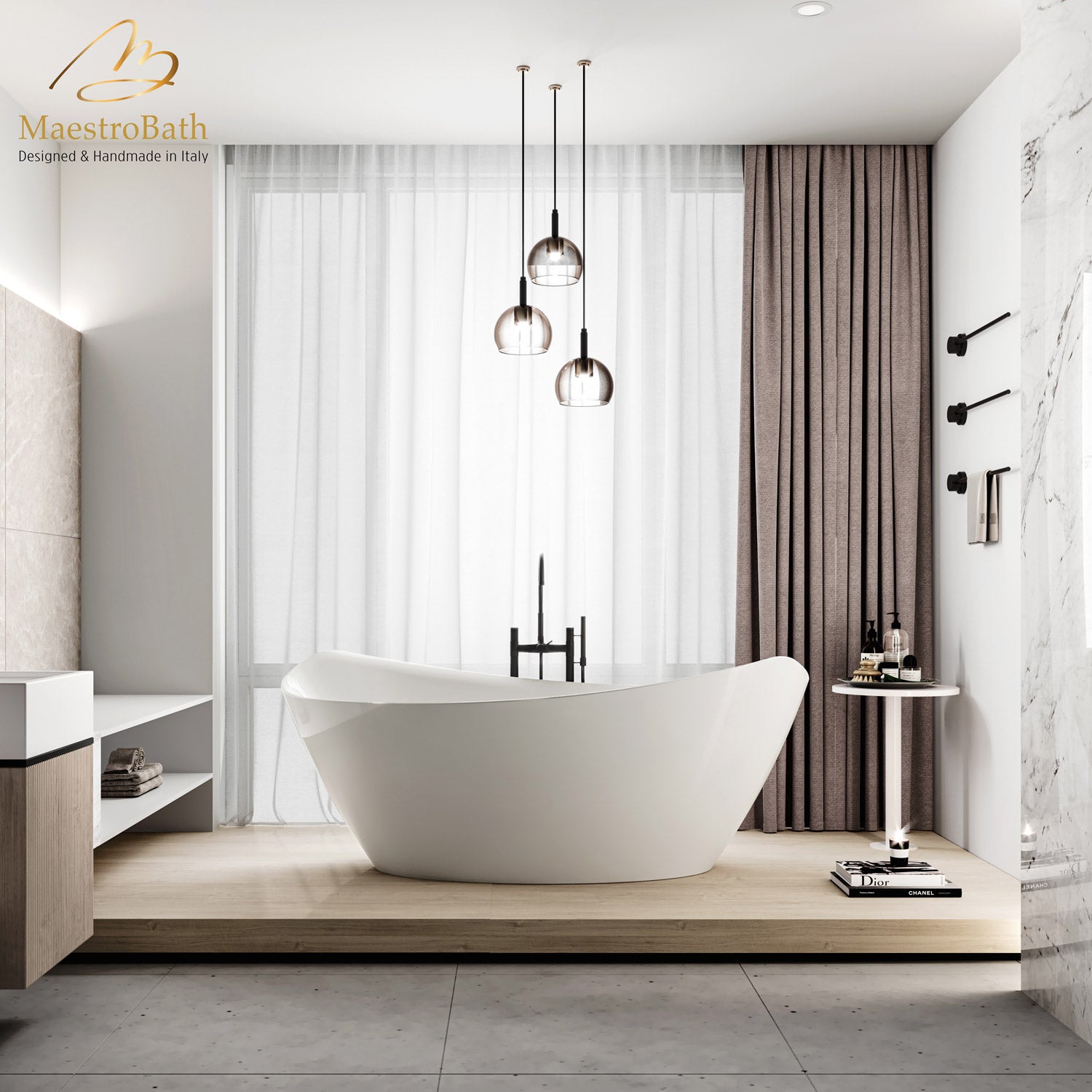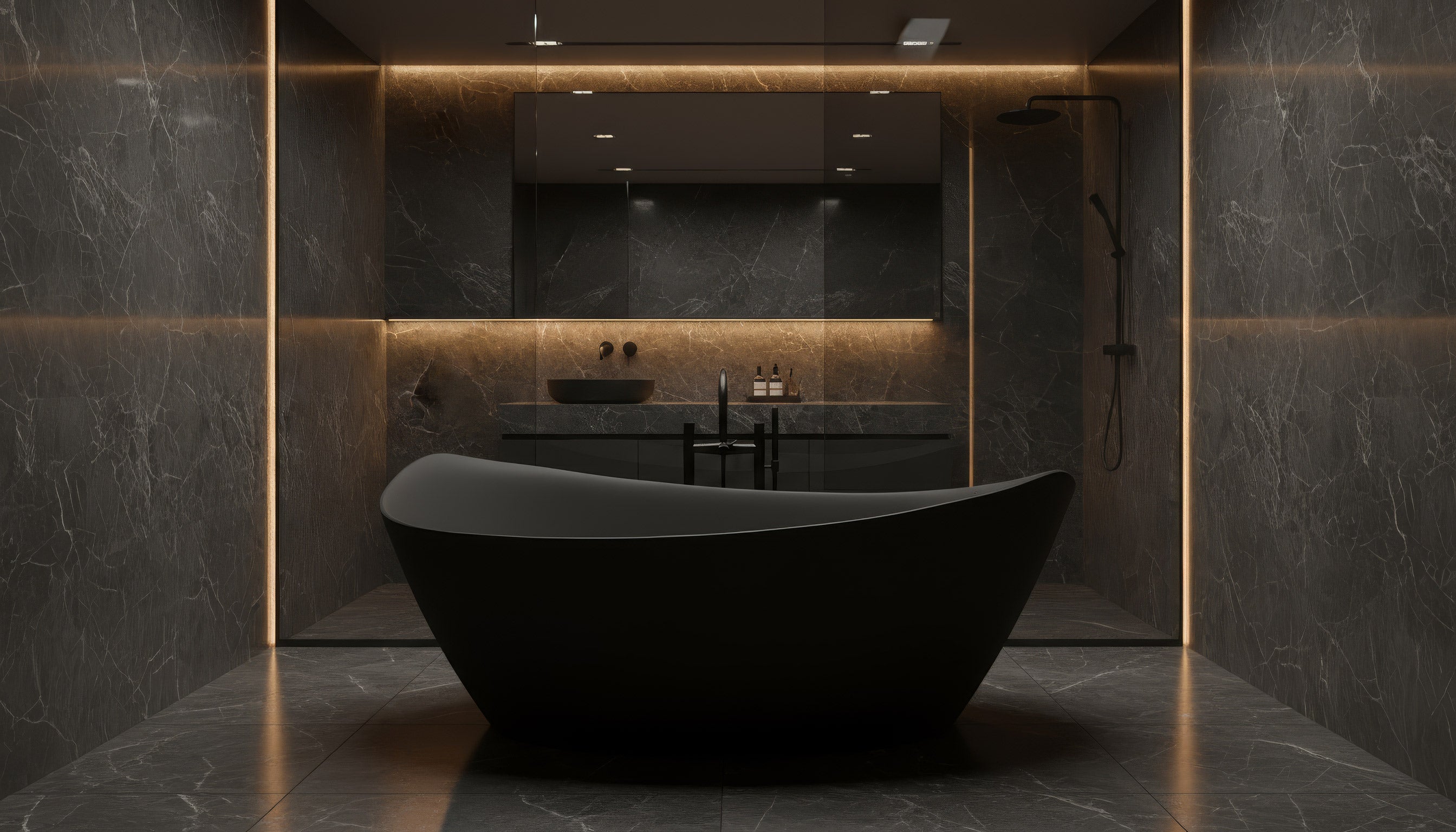A bathtub can be the focal point of your bathroom, serving both functional and aesthetic purposes. Whether you’re aiming for a spa-like retreat or just want a practical solution for daily use, selecting the right tub requires balancing a range of factors—from materials and design options to practical considerations like budget and space. Below, we break down key aspects to guide you through finding the perfect fit for your home.
1. Popular Bath Tub Materials
Acrylic
Acrylic tubs are lightweight, budget-friendly, and offer excellent heat retention. They’re also relatively easy to clean and resist chipping. If you’re looking for versatility, acrylic is a strong contender, as it comes in various shapes and sizes.
Cast Iron
Known for its durability and classic appeal, cast iron retains heat well and is highly resistant to scratches. While these tubs can be heavy and sometimes more expensive, many homeowners love the timeless look and robust construction they provide.
Fiberglass
Fiberglass tubs are among the most affordable, although they may show signs of wear more quickly than other materials. If you plan to upgrade down the line or need a quick fix, fiberglass can be a decent short-term choice.
Stone Resin
For a luxury statement, stone resin tubs bring a spa-like atmosphere and excellent heat retention. They can be pricier and heavier than other options, but the unique textures and finishes often justify the investment for those seeking a high-end aesthetic.
2. Design Styles to Consider
Freestanding
Freestanding tubs serve as eye-catching centerpieces, perfect for larger bathrooms. Styles range from modern minimalism to vintage clawfoot designs, giving you creative freedom to match any décor.
Alcove or Built-In
Alcove tubs fit into a three-walled enclosure, making them space-efficient and ideal for smaller bathrooms. Many models come with built-in shelving or storage nooks for extra convenience.
Drop-In
Drop-in tubs feature a rim that sits atop a platform or deck, allowing you to customize the surrounding tile or wood finish. This design often appears in more upscale bathroom remodels where personalization is key.
Corner
Great for compact layouts, corner tubs maximize floor space while still offering a luxurious soak. They may have built-in seating areas, jets, or unique shapes to elevate comfort.
3. Practical Tips for Selecting the Right Bath Tub
- Measure Thoroughly
Before purchasing, ensure the tub fits not only in your bathroom but also through doorways and hallways. This step helps avoid the frustration of delivery complications and returns. - Assess Your Budget
Set a realistic budget that accounts for additional expenses like installation, plumbing adjustments, and potential structural reinforcements (especially for heavier tubs). - Consider Bathing Habits
If you enjoy long soaks, look for materials with good heat retention—like cast iron or stone resin. If you prefer quick showers, a simpler fiberglass or acrylic tub might suffice. - Evaluate Maintenance Needs
Different tub materials and finishes have varying care requirements. Choose one that aligns with your lifestyle, especially if you need something low-maintenance. - Think About Style Integration
Your tub should harmonize with existing fixtures and overall design. Freestanding tubs can be statement pieces, while built-in models often blend more subtly with surrounding décor.
Choosing the perfect bathtub involves balancing aesthetics, practicality, and personal preference. From the durability of cast iron to the sleek appeal of acrylic, each material and design offers distinct benefits. By measuring your space carefully, setting a clear budget, and considering both your bathing habits and maintenance preferences, you’ll be well on your way to finding a tub that complements your bathroom while delivering everyday comfort and style.

